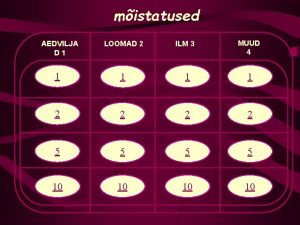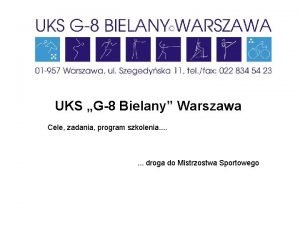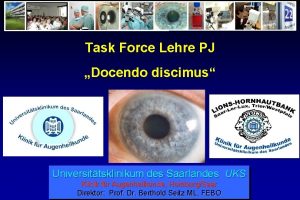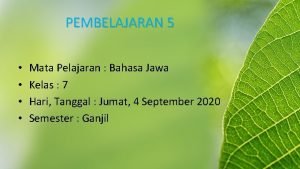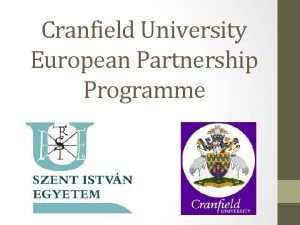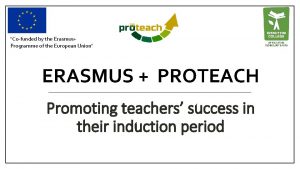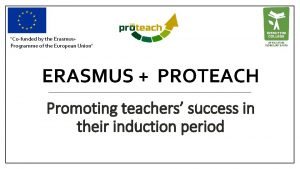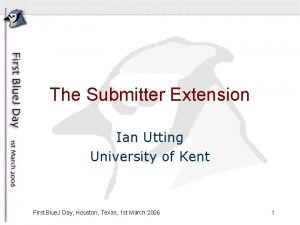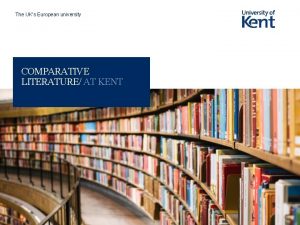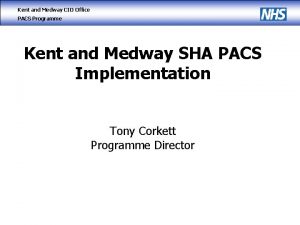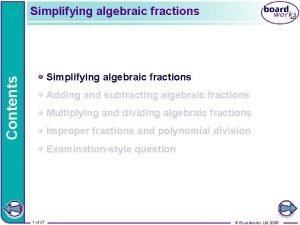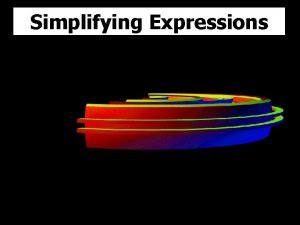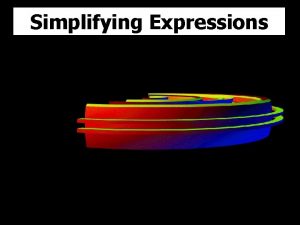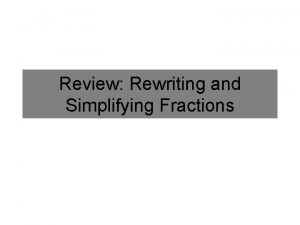The UKs European university SIMPLIFYING KENT PROGRAMME APPROVAL














- Slides: 14

The UK’s European university SIMPLIFYING KENT/ PROGRAMME APPROVAL AND CURRICULUM DESIGN

What is the purpose of SK 1? • The KSDD review identified the following areas of administrative burden: • An unnecessary bureaucracy related to programme and module approval, monitoring and review. • A high number of programmes and modules and lower average numbers of students per programme compared with other universities. • A lack of concerted use of market intelligence data to plan effectively and manage our UG and PG portfolios. • A range of complexities of administering the timetable and space, which impacts on the student experience and constrains the efficient use of space. Page 2

Summary of the project’s aims and objectives • • Page 3 The definition and agreement of general principles and criteria for assessing existing and new programmes and modules to ensure their viability. A decision about keeping, changing or discontinuing existing programmes and modules and introducing new ones on the basis of the agreed criteria. An improvement of the programme and module approval process and other QA processes to the effect of them being lean, timeefficient and flexible. A positive impact on timetabling operations, marketing and the way in which students choose their modules and / or the identification of further improvements required in those areas.

What is excluded from SK 1? • • • PGR programmes are not part of the scope of this project. SK 1 is not reviewing: • how the University markets its degrees • how teaching space is used • teaching practice and pedagogy The Programme and Module Specification Review is not part of SK 1. • The review does, however, contribute to the project’s objective to thin the University’s portfolio of programmes, by withdrawing any UG programmes which have recruited zero students in the last three years. The review will also be rationalising programme titles, which will also lead to a reduction in the number of programmes run. Page 4

What have we done so far? • The revised programme and module approval process has been designed, and the pilot is running during 2017/2018. • All feedback on the PMAS pilot is welcome via skone@kent. ac. uk. • Page 5 A data-gathering exercise has been completed, with the cooperation of Schools and Centres. This has led to a number of Schools carrying out curriculum reviews / rationalisation exercises on their own initiatives.

What’s next? • Report in January on: • Report in May on: Page 6 • Proposals for principles and criteria for viability, attractiveness, and educational worth of programmes • Proposals for revising the way in which the University approaches timetable planning • Options for how the University could structure its programmes in the future • A review of the revised PMAS pilot • An assessment of QA practices, and recommendations for change • Consideration of the impact of the project’s recommendations on marketing, module selection, and stakeholders • A plan to implement the project’s proposals and recommendations

Principles and criteria for programme viability Recommending an annual two-stage review of all programmes: • Criteria stage • Principles stage • All programmes will be checked against a set of metrics – recruitment, WP recruitment, non-continuation, NSS scores, etc. – built into a Qlikview dashboard. Programmes which do not meet benchmarks for these metrics will be flagged for review. • Faculty Deans meet with School staff to discuss flagged programmes in relation to prose principles of viability, attractiveness, and educational worth. • Following these discussions, programmes will either be unflagged, an action plan will be developed to address “of concern” metrics, or the programmes will be withdrawn. Both the criteria and principles are being drawn up now; all contributions are welcome. Page 7

Timetable planning In order to provide a more stable timetable (that is, fewer changes postrelease) to students earlier in the academic cycle, the following recommendations are being made: • • • Study leave to be finalised by 31 st October each year. Schools deliver clash-free Block 2 data by TTO deadline; a ‘Schoolshaped’ timetable suitable for each School’s SH and JH students. Academic staff required to engage with timetable planning. No changes to the teaching timetable after release to students except in highly exceptional circumstances (staff illness etc. ). No changes (post-release) to the teaching timetable to accommodate students taking modules as optional or wild. These recommendations are intended to improve the student experience, and cut down on staff workload relating to timetable planning and timetable changes during the academic year. Page 8

Why review our programme structure? UG programmes • • 532 UG programmes have recruited at least one student between 13/14 and 17/18. This does not include programmes which are advertised but do not recruit any students. However, only 208 programmes have recruited 10 or more students at least once in that period. On average, 83% of our students are recruited to 39% of our UG programmes. Our twenty-five most popular programmes recruit 39% of all students. PGT programmes • • • Page 9 373 PGT programmes have recruited at least one student between 13/14 and 17/18; 217 have recruited five students or more. On average, 94% of our students are recruited to 58% of our PGT programmes. Data from Qlikview – STU 1

Why review our programme structure? • • Page 10 There is a significant overhead cost to maintaining a large portfolio of programmes (advertising, maintenance on data systems, compliance and reporting etc. ). We are exploring how the University can reduce the number of individual programmes we run, while retaining our breadth of subjects.

Options for our programme structure • • • Page 11 Keep it as it is. Withdraw all programmes which have not met a certain threshold for the last five years. Review all programmes, with a particular focus on joint-honours, and withdraw those which do not meet the proposed principles and criteria for a viable programme. Move to a system of programme pathways. Move to a system of majors and minors. No change in programme structure “Reset button”

Initial proposal for programme pathways • • • Programmes which are broadly similar (sharing core and/or optional modules, learning outcomes etc. ) would be combined into a single programme. These new programmes would include defined pathways with distinct sets of modules. Pathways may also lead to distinct award titles. For example, the Computer Science programme may lead, via pathways, to awards in: • Computer Science (Consultancy) • Computer Science (Networks) Page 12

Initial proposal for a major/minor system • • AND / OR Major that is compatible with a minor Minor Schools decide which delivery method(s) best suit their subjects: • Forensic Science may be delivered only as a major incompatible with a minor, due to the study intensity etc. • History may be delivered as a major compatible with a minor, and as a minor. • Asian Studies may be delivered only as a minor. Schools approve which subjects their compatible majors and minors combine with: • • Page 13 Major that is incompatible with a minor OR Subjects can be delivered in three ways: EITHER • History (major) - ✔ French (major) - ✔ History (major) and French (minor) - ✔ French (major) and History (minor) - ✘ (for example)

THE UK’S EUROPEAN UNIVERSITY We would welcome your thoughts and questions regarding these proposals. Please contact skone@kent. ac. uk with any suggestions or feedback. www. kent. ac. uk
 Contoh buku daftar pasien uks
Contoh buku daftar pasien uks üks hani neli nina
üks hani neli nina G8 warszawa
G8 warszawa Obat-obatan di uks sekolah
Obat-obatan di uks sekolah Perbedaan pkn dengan mata pelajaran lain
Perbedaan pkn dengan mata pelajaran lain What is the attribution theory in sport
What is the attribution theory in sport Pj uks
Pj uks Tembang pangkur kedadean saka pirang gatra
Tembang pangkur kedadean saka pirang gatra Cranfield european partnership programme
Cranfield european partnership programme Co-funded by the erasmus+ programme of the european union
Co-funded by the erasmus+ programme of the european union Co-funded by the erasmus+ programme of the european union
Co-funded by the erasmus+ programme of the european union Co-funded by the erasmus+ programme of the european union
Co-funded by the erasmus+ programme of the european union Kent state university riot
Kent state university riot University of kent extensions
University of kent extensions Kent state university
Kent state university

